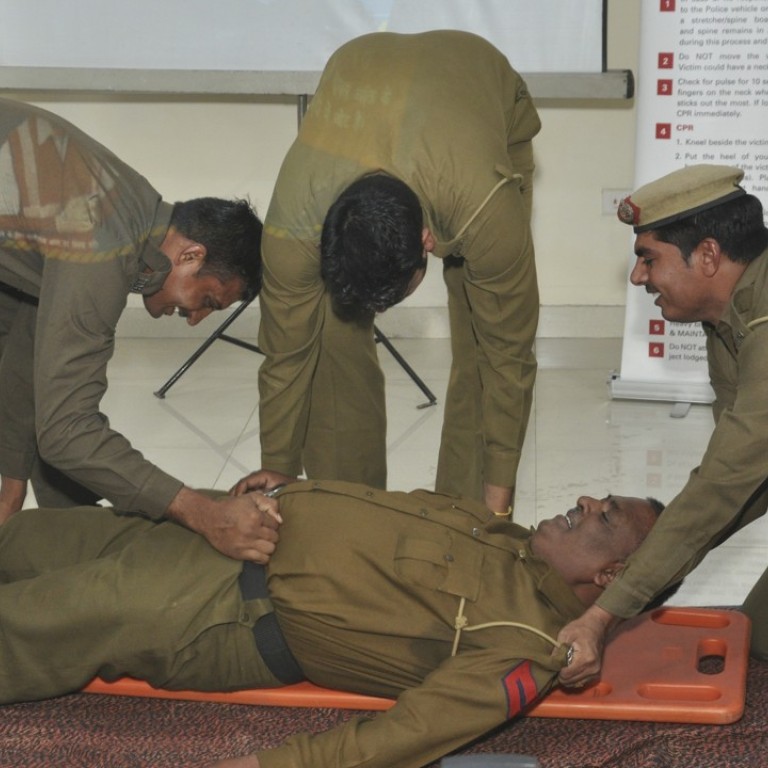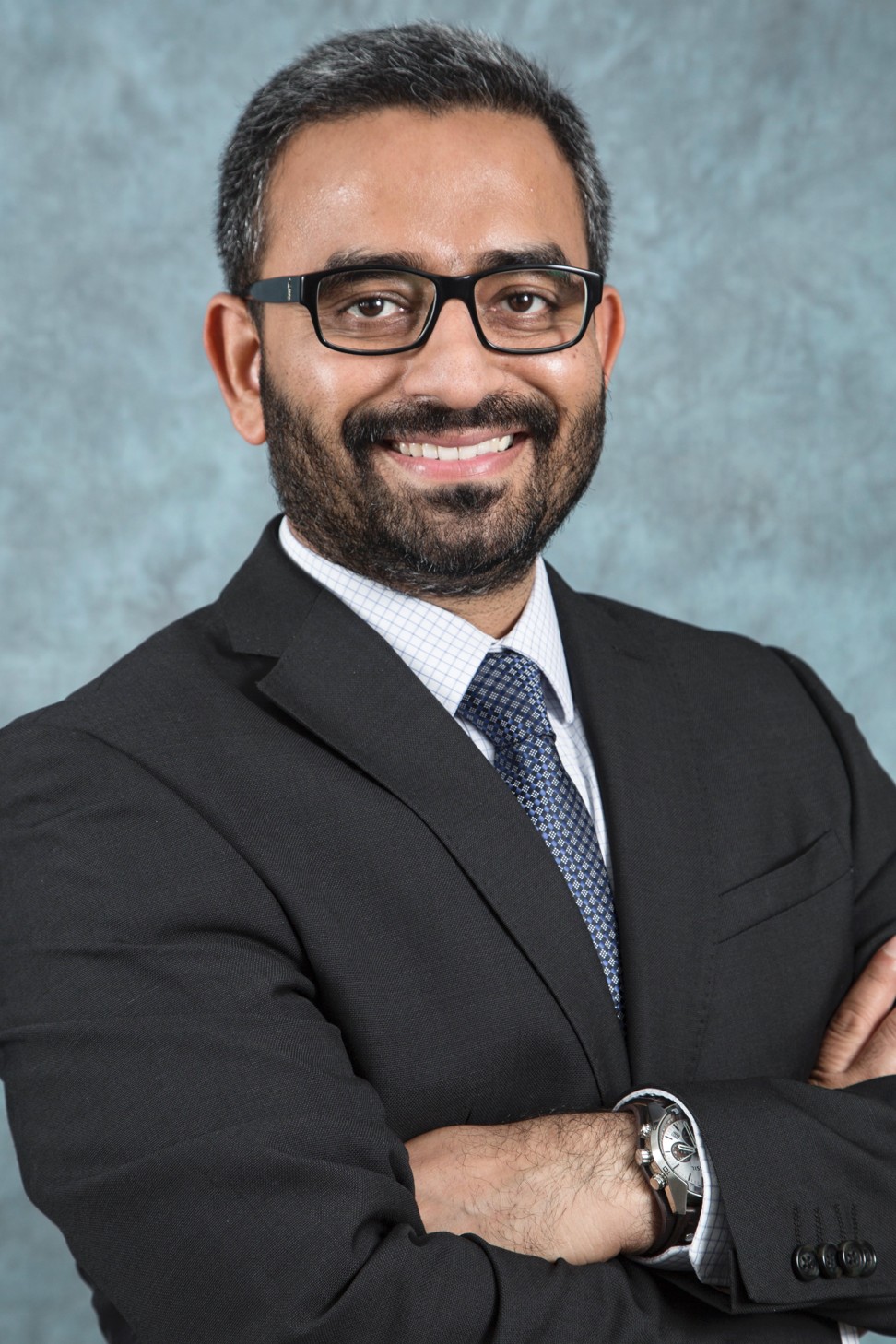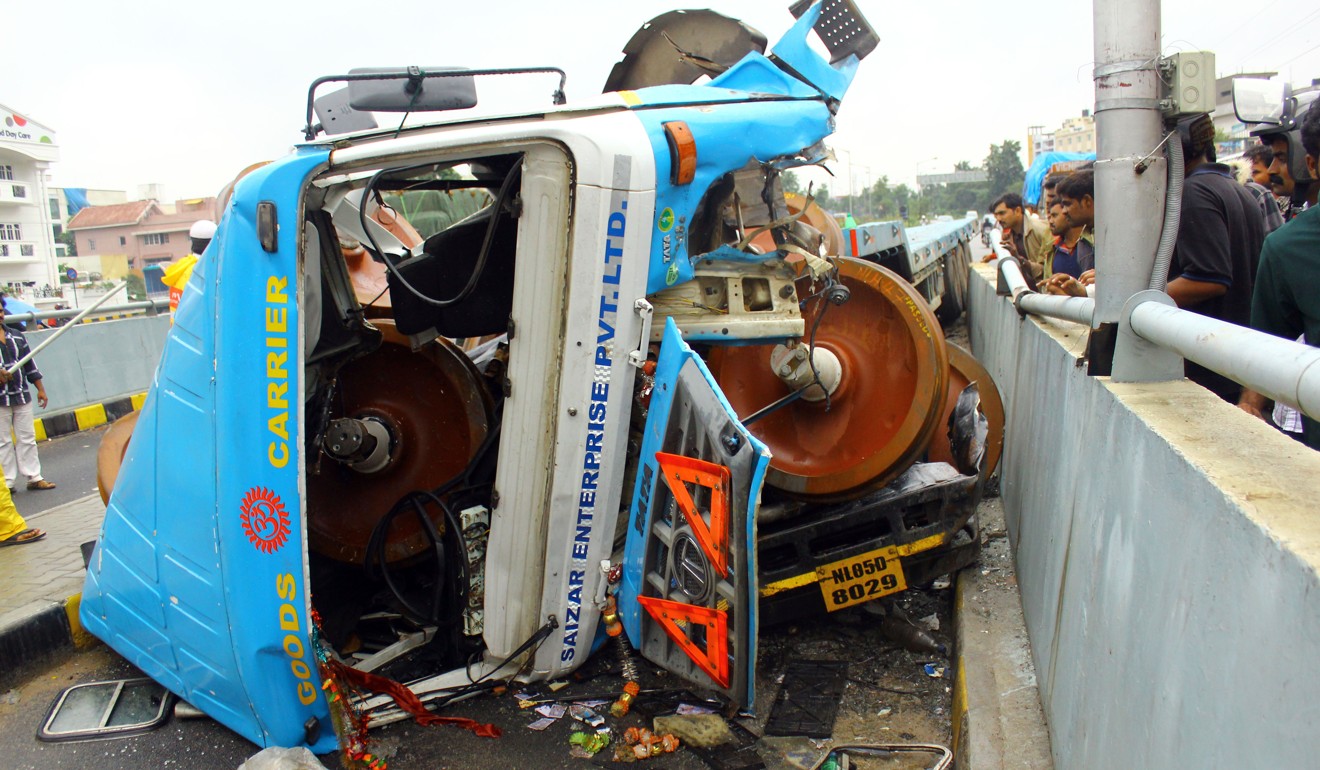
Video | On India’s deadly roads, NGO helps first responders save lives by training them in how to care for crash victims
After the death of his cousin in a car accident, investment banker Piyush Tewari vowed to improve road safety in India. Since 2008 his foundation has trained police and Good Samaritans in life-saving care for crash victims
When Piyush Tewari’s cousin was hit by a car and killed it changed his life forever. Shivam Bajpai was just 17 and walking home from school in the industrial city of Kanpur in 2007 when he was knocked down.
In a state of shock, the driver panicked and reversed over Bajpai’s body.
Shivam dragged himself to the side of the road and cried out for help, where Tewari believes hundreds of people walked by him and left him to die.
Smog blankets Beijing, northern China, causes road closures around the country
After the tragedy Tewari saw his aunt “shut down”, as she had also lost her husband in a car accident.
“To lose her son in the same way was just too much for her,” he says.
Tewari, too, was devastated by the tragedy, but he decided to do something about it. He took time off as an investment banker to meet doctors, police and the families of accident victims in New Delhi to address the deadly problem of India’s roads.
They are murderously dangerous, and anyone who lives in India sees every day the lunacy that passes for driving there.
Outcry after Chinese woman hit by car, ignored, run over again
But it was a surprise for him to learn that most accident victims die because during the crucial first hour after an accident they fail to receive first aid – neither the police nor bystanders were equipped to give this essential emergency treatment.
His horror at this senseless loss of life made him determined to do something about it, so Tewari, 37, set up the SaveLIFE Foundation in 2008 to help accident victims and improve road safety.

His main goal was to train the police and volunteers in first aid training. “At first, the response of the police to our suggestion was lukewarm. For first aid training, policemen were made to watch a 45-minute video. That was it. No hands-on practice.
“Also, they felt that rescuing and reviving victims was the job of the ambulance service, not theirs. But they didn’t realise that, given how scarce ambulances are in New Delhi, it is police vans that invariably reach the spot first, and what they do there is crucial,” said Tewari.
Traffic’s toll: road accidents kill 700 people a day in China
In fact, it is the police patrol vans – far more numerous than ambulances – which carry around the 60,000 accident victims to hospital every year in India.
To date, the foundation has trained more than 12,000 policemen in the country.
One of the biggest mistakes was that victims were lifted from the road without their spine and neck being kept immobilised.
“They would also pick up a bleeding victim and tie something around a wound but without applying consistent pressure to stop the bleeding. Or, if someone had been impaled, they would try to remove the railing or rod from the body until we told them to take victims as they were to hospital,” says Tewari.
Police officers soon realised the massive difference they could make to a crash victim’s survival.
Road accidents kill more people in China than cancers, Lancet study finds
Through this training, the foundation achieved a 30 per cent reduction in road crash deaths in Delhi between 2010 and 2015. In addition to policemen, the foundation has trained 3,000 volunteers in New Delhi to give first aid treatment as “first responders” at an accident.
In 2011, Tewari left his job to run the foundation full-time, building a staff of 15 who work across 10 states.
Apart from lack of training, one other reason so many Indians were reluctant to help accident victims was the fear of getting involved with the police.
Tewari realised he had to add advocacy to training. No one had tried to help his cousin Shivam for fear of repeated police questioning and legal hassles – a regular problem on China’s roads as well.

However, after lobbying for years, last year, the SaveLIFE Foundation managed to get the Supreme Court to pass a Good Samaritan law to provide legal protection to bystanders if they step in to help an accident victim. This move is expected to save more than 75,000 lives annually by enabling faster bystander response for injured victims.
In addition, the foundation and its partners helped create “safety corridors” on some key roads in western India that are prone to fatalities. One of these is the Mumbai-Pune expressway that has over 140 deaths every year.
Tewari now hopes to launch a special app that would allow anyone registered on the app, if they see an accident, to call a trained volunteer to come and provide help.
“Our aim is to create the largest network of trained volunteers in the world,” he said.
What keeps him going are both the success stories and the tragedies.
Beijing draws up laws to protect Good Samaritans from malicious legal action
Tewari recalls a policeman telling him how pleased he felt when he was able to help a crash victim. The man was riding his motorbike when he was knocked off by a speeding car. He hit the road divider and was choking on his own blood when the policeman arrived.
“The policeman was trained [by us] and so he moved as much blood out of the victim’s mouth as he could and performed CPR. By the time, they reached the hospital, the victim’s pulse had returned and he made a full recovery. If he hadn’t been trained, he would not have cleaned his airways and given CPR. He would just have taken him to hospital where the victim would have arrived brain-dead,” says Tewari.

Over the years, his foundation has made a difference in many ways.
When a man crashed his car into a truck carrying rods and impaled himself, the policemen knew they had to tow the car, as is, to the hospital where the staff, along with fire personnel, were waiting, ready to extricate the man and treat him.
This inturn saw, in 2014, the foundation secure a ban on trucks carrying protruding rods, a measure that is estimated to be able to save more than 9,000 lives annually.
On another occasion three policemen arrived to help an auto rickshaw driver and a motorcyclist who had collided. They got out of their patrol car and rushed towards the bodies, only for a truck to plough into them, killing the three policemen and the two victims.
Killed trying to help: horror crash with tow truck leaves one dead, causes car pile-up and closure of North Lantau Highway
“Now we tell the police that they must secure the site first by using their vehicles to block traffic completely while they help victims,” he says.
“They have to understand that they if they are not safe, they can’t save anybody. Before they intervene to help an accident victim, they must ensure they are safe themselves.”

